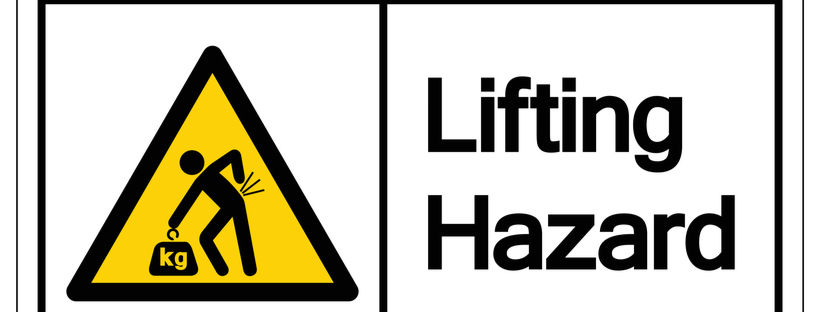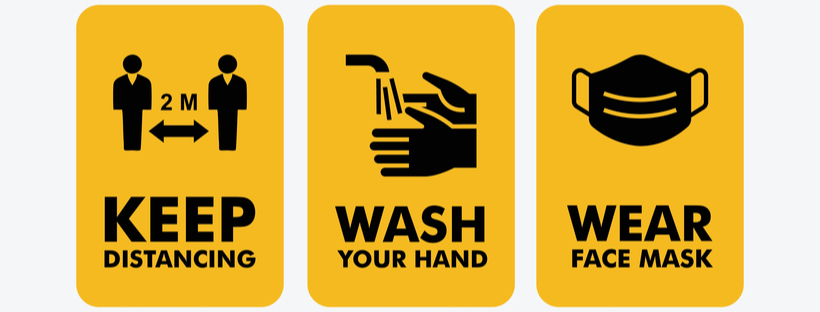Safety should be a primary concern for businesses of all shapes and sizes, regardless of their industrial sector. Of course, segments like manufacturing or construction would be more focused on safety, but that’s not to say that retail or education can slack off on this front.
Whether the safety measures are for the customers or employees, businesses must communicate these for greater awareness. Proactive action in this regard can also limit any form of liability as your establishment would comply with the regulatory norms.
Install Signage at Work

Installing signage in the workplace is a low-hanging fruit that any business can easily capitalize on. You get a range of reflective and non-reflective signs, which will offer you excellent visibility and long-term durability. As for the design, regulatory bodies like the OSHA and ANSI have already established standardized guidelines for making these signs as unambiguous and understandable as possible.
In other words, much of the work is already done for you! All you need to do is identify the hazards, locate the appropriate signage and install it in a highly visible spot. You can also go above and beyond by installing decals with customized messages to reinforce safety. Such measures ensure that no stone is left unturned to make the workplace safe.
Invest in Safety Gear and Equipment
Whether installing sneeze guards at cash registers, distributing hard hats and safety goggles at construction sites, or purchasing flame-retardant table covers for events, the best way to communicate safety is by putting your money where your mouth is. Investing in safety gear and equipment demonstrates that you are serious about the safety and well-being of those around you.
While you are at it, set aside a sizable budget for such safety assets. Sure, they will not be cheap, but you will see the massive ROI before you know it. Not to mention, people will not have any excuse for not adhering to safety standards. So, it is a win-win situation overall.
Share Safety Updates

The past few years have emphasized the importance of sharing health and safety updates amongst employees, patrons, and everybody involved. You can set aside separate email campaigns to inform such parties about any developments (in case of any incident), safety protocols that need to be followed, and changes if any. You can also communicate such information through your social media handles for more widespread reach.
Alternatively, printing safety brochures and flyers and distributing these as mailers or in-person handouts can be an effective way to impress the ideals of safety. Whether you share safety-related information digitally, offline, or through a mix of both channels, businesses should take it as a responsibility to do it nonetheless.
Conduct Safety Drills
When was the last time you conducted a safety drill? It has been long overdue if you take longer than five seconds to answer that question. Conducting safety drills and meetings should be a routine affair for organizations. The frequency may vary from industry to industry and depending on the level of threat, but constantly refreshing up on the safety protocols will keep these measures on the forefront of people’s minds.
Most businesses create a safety week or month where they demonstrate and go over all safety guidelines. You can convert the key takeaways from such meetings into informative banners so that you don’t have a case of “out of sight, out of mind” at your hand.
Perform Routine Checks

Simply educating individuals is not enough. You have to test how much of it is actually being put into practice. Supervisors and managers should perform regular safety checks to identify hazards that need to be kept in check. Those wobbly frames, exposed wires, or failure to wear protective gear may come to light, which needs to be addressed immediately.
They can also delegate some of their work by ascribing accountability for certain actions so that stakeholders can assume responsibility for their actions. Safety in charge can also prepare incident reports highlighting the impact of unsafe behavior.
Reward Safe Behavior
Rewarding safe behavior is as crucial as punishing unsafe behavior. Implement policies that incentivize those who actively participate in safety demonstrations. For employees, incorporating adherence to safety protocols within the employee review process can prove to be instrumental in ensuring compliance and uptake of this initiative.
Similarly, you can have online and offline safety comment cards to collect feedback on how your business is doing to maintain safety. Such measures will create a work culture that is centered around safety.

 Posted in
Posted in 


